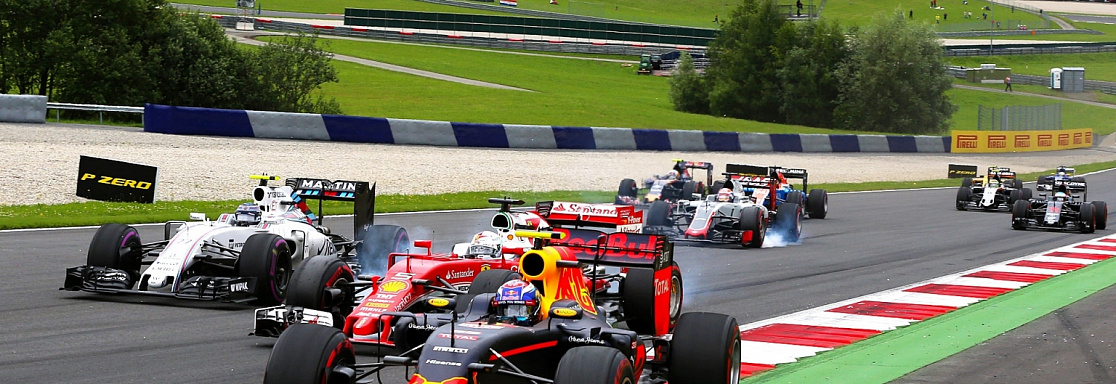Championship card
Formula 1

F1 is one of the most prestigious competitions in the world of the road racing in the fastest single-seater car category. This championship dates back to 1950 with increasing popularity and development even up until today.
The main purpose of a Formula 1 contest is to determine the winner of a race. The driver who crosses the finish line first after completing a pre-determined number of laps is declared the winner.
Each race in a season is called a ‘Grand Prix’. Every Grand Prix Championship is held with races all around the world, evaluated with a points system to determine the 2 final Winners of F1: one being the driver (Drivers' Championship Award) and another for the team of constructors (Constructors' Championship Award). Normally there are around 19-20 GPs in a season. After every race the drivers who finish at first, second and third positions stand on a podium and are awarded trophies.
The minimum standard length of the race must be 300 km (with one exception –Monaco where the total distance is 260 km). The GP race cannot be more than 2 hours. If the designated time of 2 hours is up, the race will be finished at the end of the ongoing lap.
Formula 1 has a practical impact on everyday cars: during the improvement of technical solutions, teams often find a lot of interesting engineering ideas, which are subsequently used in mass production.
Vitaly Petrov was the first Russian F1 driver, competing in F1 during 2010-2012, driving for Renault F1 team, Lotus Renault GP and Caterham F1 team. In 2018, Sergey Sirotkin joined the Formula One Championship with the Williams team.
The main purpose of a Formula 1 contest is to determine the winner of a race. The driver who crosses the finish line first after completing a pre-determined number of laps is declared the winner.
Each race in a season is called a ‘Grand Prix’. Every Grand Prix Championship is held with races all around the world, evaluated with a points system to determine the 2 final Winners of F1: one being the driver (Drivers' Championship Award) and another for the team of constructors (Constructors' Championship Award). Normally there are around 19-20 GPs in a season. After every race the drivers who finish at first, second and third positions stand on a podium and are awarded trophies.
The minimum standard length of the race must be 300 km (with one exception –Monaco where the total distance is 260 km). The GP race cannot be more than 2 hours. If the designated time of 2 hours is up, the race will be finished at the end of the ongoing lap.
Formula 1 has a practical impact on everyday cars: during the improvement of technical solutions, teams often find a lot of interesting engineering ideas, which are subsequently used in mass production.
Vitaly Petrov was the first Russian F1 driver, competing in F1 during 2010-2012, driving for Renault F1 team, Lotus Renault GP and Caterham F1 team. In 2018, Sergey Sirotkin joined the Formula One Championship with the Williams team.
CARS
Open-wheel, open-cockpit, single-seat racing car
REIGNING CHAMPION
Lewis Hamilton (Mercedes)
THREE-DAYS WEEKENDS
Friday: practice sessions. It is a great opportunity for the teams and drivers use to learn the track, test their cars and set everything up to get the best result during the race.
Saturday: qualifying round. Qualifying is a three-session elimination-style format with a time limit to determine the starting order of all the cars in the race.
Sunday: the drivers line their cars up in the order they qualified and take off for the win.
Saturday: qualifying round. Qualifying is a three-session elimination-style format with a time limit to determine the starting order of all the cars in the race.
Sunday: the drivers line their cars up in the order they qualified and take off for the win.
news
19 September















